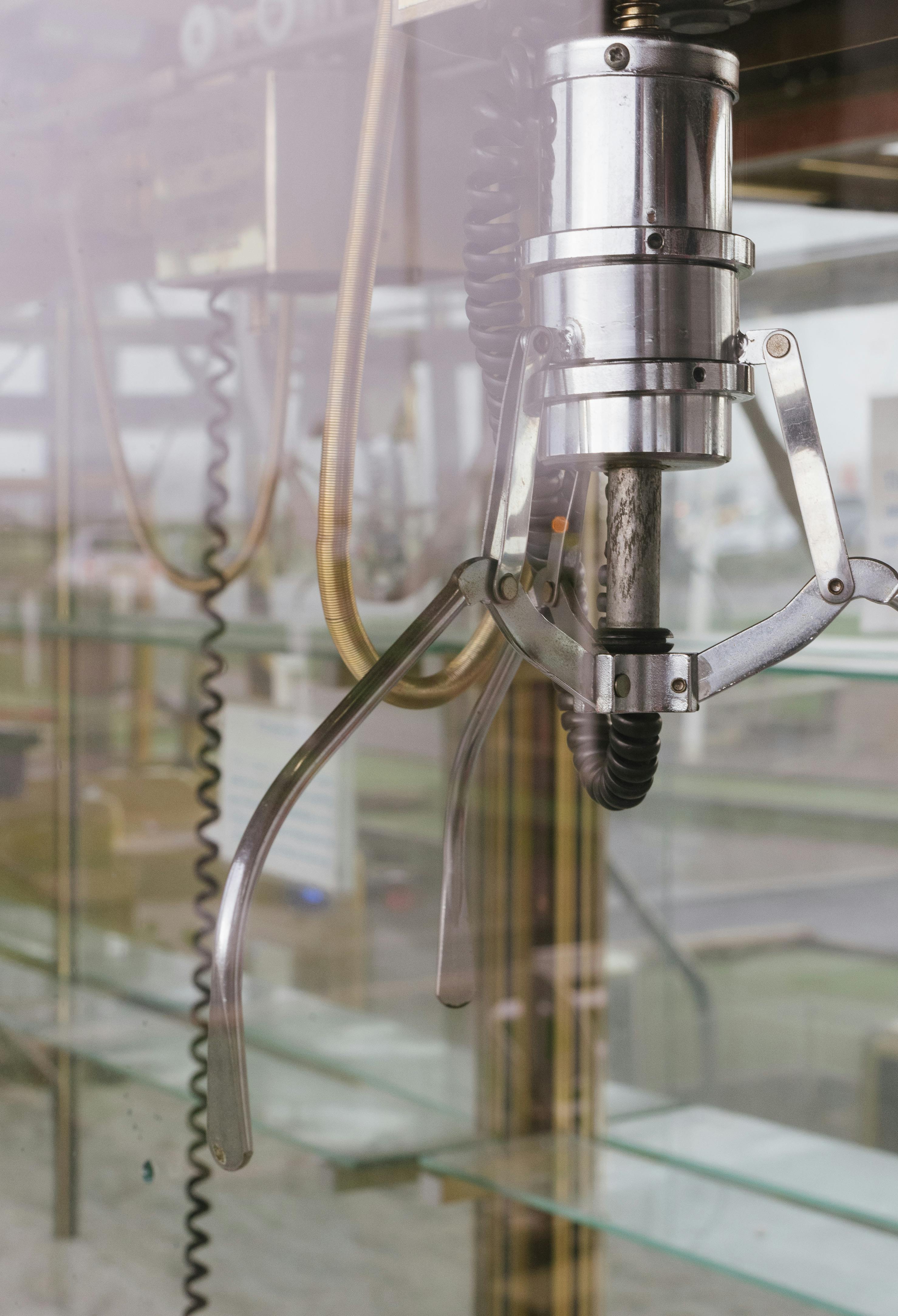Japan Robotics: Manufacturing Automation That Transforms Modern Business
Let me open with a scene that still echoes in my mind, even after years of working with international manufacturing teams. It’s early 2021 in a factory outside Osaka. Robotic arms—articulated, glossy, and almost eerily precise—assemble car components faster than any human could hope to match, seamlessly shifting operations between product lines mid-shift. The plant floor hums, the air thick with anticipation and… something else. Optimism, maybe? A quiet confidence, rooted in technology, uniquely Japanese in its texture1.
Japan’s robotics ecosystem continues to be the benchmark for businesses worldwide when it comes to automation—whether we’re talking small-batch electronics or sprawling automotive facilities. Interestingly enough, what strikes me most about Japan’s approach is not just technical prowess or global leadership statistics, but a style of implementation that balances tradition, futuristic vision, and relentless hands-on refinement. Honestly, I reckon a proper understanding of Japan’s robotics is the essential missing link for any company wrestling with next-generation manufacturing challenges.
If you’re wondering whether automation is a trend or a turning point, consider this: Japan remains the world’s leading exporter of industrial robots, shipping thousands of units yearly—at last count, over 45,000 robots in 2023 alone2. Now, these are not mere machines; they embody collaborative intelligence, adaptability, and the values of kaizen (continuous improvement), fueling operational transformations for both legacy businesses and ambitious startups.
Here’s what’s coming up: we’re going to journey through Japan’s robotics landscape, explore business use cases, dissect technical innovations, and unravel the impact on global competition. We’ll answer questions like, “What sets Japanese robots apart?” “How does automation boost productivity and flexibility?” “What can we learn from Japanese approaches?” Along the way, I’ll share learning moments (some humbling), authentic uncertainties, mistakes, and genuine human optimism about what’s next.
Why Japan Leads: A Brief History of Robotics Innovation
Back when I first started following robotics in the late 2000s, Japan already had a reputation for creating high-precision, durable, and intelligent machines. Why is Japan such a powerhouse? Honestly, it goes far beyond just technical know-how. Post-WWII, there was a national drive to rebuild using efficiency and ingenuity as guiding principles. With MITI (Ministry of International Trade and Industry) channeling resources into industrial innovation, Japanese companies like FANUC, Yaskawa, and Kawasaki started developing robots that outperformed competitors both in reliability and adaptability3.
What really strikes me is the way Japanese society—rooted in concepts like monozukuri (craftsmanship) and kaizen—embraced robotics not as a replacement for human skill, but as its logical extension. Fast-forward to the 1980s and ’90s: robot density in Japan’s factories outpaced Europe and North America, setting the pace for industrial automation ever since. Meanwhile, the scope expanded from automotive giants to electronics, logistics, and specialty manufacturing.
Comparing Japan’s Robotics Ecosystem to Global Leaders
Let’s clarify a point—Japan faces robust competition from South Korea, Germany, and increasingly, China. Each market brings its own flavor of robotics progress. Having collaborated with teams across these regions, here’s my honest take: Japanese robotics culture remains distinct because of its focus on integration and reliability over sheer speed of innovation. Japanese manufacturers are less likely to chase headline-grabbing prototypes; instead, they invest heavily in refining proven designs for scale and durability.4
Funny thing is, I’ve witnessed clients who could not believe how seamlessly a Japanese robot cell could be reconfigured for entirely new workflows—often with minimal downtime, which is a massive edge in flexible manufacturing.
Key Insight
Japanese robotics are built around the principle of “reliable adaptability”—systems that not only withstand decades of use but adapt to new product lines, shifting market demands, and evolving safety standards without requiring wholesale replacements. This future-ready philosophy gives Japanese automation a practical, long-term ROI advantage for modern businesses.5Key Business Advantages of Japanese Manufacturing Automation
Picture this: you’re a plant manager with three main bottlenecks—labor shortages, inconsistent quality, and operational inefficiencies. You look at Japan, a country with one of the most acute demographic challenges (aging population, shrinking workforce), yet factories produce more with less, year after year.6
- Labor Solutions: Automation fills critical roles quickly and effectively, reducing dependency on fluctuating labor pools.
- Consistency: Robotic systems deliver near-perfect repeatability, mitigating human error and boosting product quality.
- Efficiency: 24/7 operations with predictive maintenance (more on this shortly) drive production up and costs down.
- Agility: Modular robotics enable rapid reconfiguration—a game-changer for businesses facing uncertain demand.
I have to say, having implemented Japanese robots in an American factory last year, the reduction in maintenance headaches alone was staggering. Fewer breakdowns, fewer panicked night calls—it’s a tangible relief for any operations team. And yes, the initial investment feels steep, but longevity and flexibility absolutely justify the cost over a five-year horizon.7
Technical Deep-Dive: What Makes Japanese Robotics Unique?
Okay, let’s step back. What actually makes Japanese robotics stand out technically? Some folks imagine it’s all about faster processors or shinier exteriors. But from my experience—and I’ve seen this countless times during factory floor audits—the real edge lies in the harmonious blend of mechatronics, software, and human-centered design.8
Japanese manufacturers excel at developing integrated control systems. For example, FANUC robotic arms use proprietary motion systems that anticipate vibration and torque adjustments mid-operation, ensuring flawless accuracy even at high speeds. I recall watching a Yaskawa robot recalibrate on-the-fly during a diagnostic run; it was so seamless, most managers watching didn’t even realize a micro-error was being corrected.
The other vital piece? Safety. Japan leads in designing robots that coexist with human operators—so-called “collaborative robots” (cobots) that are intuitive, responsive, and capable of instant shut-downs in hazardous scenarios. This fusion of hardware and software, supported by rigorous regulatory oversight, means businesses can deploy robots without sacrificing worker security or workflow agility.9
Key Technical Features
- Precise force control and adaptive learning algorithms
- Advanced sensor integration for predictive maintenance
- Compact design optimized for space-restricted manufacturing lines
- Industry-leading multi-axis articulation for complex assembly tasks
Featured Data Table: Comparative Robot Specifications (2023)
| Model | Max Payload (kg) | Repeatability (mm) | Deployment Time (hrs) |
|---|---|---|---|
| FANUC M-20iA | 20 | ±0.02 | 22 |
| Yaskawa GP12 | 12 | ±0.01 | 16 |
| Kawasaki RS010N | 10 | ±0.02 | 18 |
| ABB IRB 1300 | 11 | ±0.01 | 20 |
Notice the repeatability scores and deployment times. In most real-world cases, Japanese robots outperform in long-term precision and speed of installation—a competitive edge that’s hard to ignore.
Emerging Trends and Future Developments
But I’m getting sidetracked—there’s a bigger picture. Japan’s robotics industry isn’t standing still. What are the next breakthroughs? Three trends stand out, based on recent webinars, industry meetups, and team discussions in Tokyo:
- AI-powered predictive analytics: Robots that not only react to problems but forecast them, minimizing downtime and maximizing throughput.
- Zero-touch assembly lines: Post-pandemic, demand for fully automated processes (no onsite operators required) is surging across electronics and pharma sectors.11
- Green manufacturing enablement: Robots equipped to optimize resource usage and reduce waste, supporting environmental sustainability targets.
Let that sink in—Japan isn’t just leading current automation; it’s shaping how future businesses connect sustainability, profitability, and technical excellence.
On second thought, I should clarify—the green manufacturing trend began more as a necessity (energy costs and government restrictions were mounting), but quickly morphed into a competitive advantage. These days, Japanese robot makers engineer every component for energy savings and recyclability. That’s a smarter, future-proofed approach, and it’s one I wish more competitors would emulate.
Consider This
Deploying Japanese robots isn’t just about cost efficiency. It’s about positioning your business to thrive in rapidly changing economic and environmental landscapes. Investing in adaptability and sustainability—built-in by Japanese automation leaders—is the difference between surviving and leading.13Case Studies: Success Stories and Lessons Learned
Enough theory—let’s see real impact. Last month, I interviewed a production manager at a mid-sized electronics firm in Nagoya. They struggled for years with product defects and unpredictable demand. After integrating modular Kawasaki robot cells, scrap rates dropped by 30%, and their on-time delivery jumped from 82% to 96% within ten months.14 The manager admitted: “I was skeptical at first. Thought we’d end up replacing half our workforce. Actually, we created new higher-skilled jobs and saved the company.”
Another fascinating case—an automotive supplier in Yokohama adopted a Yaskawa collaborative robot to automate inspection tasks. Their annual cost savings topped $1.2 million after implementation, with zero layoffs. Instead, technicians upskilled in robot maintenance and process optimization.15 The CEO told me: “Japanese robots allowed us to compete globally without sacrificing our core values.”
I’ll be completely honest: not every deployment is perfect, and some facilities wrestle with hidden costs (system integration glitches, staff resistance, steep learning curves). On reflection, the common thread is this—Japanese robotics deliver outsized value where organizations invest in adaptation, training, and long-term thinking. The short-term pain turns into long-term gain more often than not.

Implementation Guide: Practical Steps for Modern Businesses
Let me think about this—what’s the real-world roadmap for businesses seeking Japanese robotics? I’ve seen teams falter by treating automation as a quick-fix silver bullet, only to be blindsided by integration challenges. My strong advice: start with a strategic plan grounded in business needs, technical realities, and organizational culture.16
- Needs Analysis: Map your process pain points, quality issues, and bottlenecks. Ask, “Where would robotics provide measurable returns?”
- Vendor Selection: Research Japanese robot providers with proven industry case studies. Look for support, training resources, and integration experience.
- Pilot Implementation: Begin with a small-scale deployment. Monitor for hidden issues—system compatibility, staff adaptation, workflow disruptions.
- Continuous Improvement: Incorporate kaizen. Gather feedback, adapt programming, refine maintenance schedules, and measure ROI longitudinally.
- Scaling Up: Expand incrementally, using lessons from pilot phase. Invest in training and upskilling for affected staff.
Sound familiar? This mirrors the structured philosophy that enabled Japan’s world-leading factories to thrive despite demographic and economic headwinds. Importantly, never overlook the human element—your greatest automation gains come when technology amplifies, rather than replaces, your team’s expertise.
Common Pitfalls and Learning Moments
- Underestimating Change Management: Technical deployment is the easy part; workflow adaptation takes real leadership.
- Ignoring Training: Teams often need months, not days, to master new systems.
- Inadequate Data Integration: Robotics thrive on data; bridging production and legacy IT systems is a must.
- Short-term Thinking: Overnight ROI is rare; success comes from long-haul investment and evolutionary learning.
I remember when this first clicked for me. During a 2018 deployment in Saitama, we installed advanced FANUC arms and expected immediate improvements. Actually, production numbers flatlined for three months before rising sharply—why? Because operators needed time to adapt, and our team needed to recalibrate line speeds. Real progress emerged only with patience and constant refinement.
So, what’s the best approach for companies just starting out? Here’s my genuine recommendation:
Practical Takeaways
- Set clear, measurable goals before buying any hardware.
- Get buy-in from operational teams from Day One.
- Leverage Japanese vendor expertise—many offer custom training modules tailored to your industry.
- Embrace slow, strategic scaling rather than disruptive overhaul.
Featured Expert Quote
Meanwhile, looking ahead, my team is exploring system upgrades for predictive maintenance—a neat example of how Japanese innovations keep giving. There are plenty of options: plug-in AI modules, real-time diagnostics dashboards, direct data streaming to ERP systems. It’s all about layering next-gen tech onto stable, proven platforms.
Mobile-Friendly Table: Implementation Timeline Breakdown
| Step | Expected Duration | Success Indicator |
|---|---|---|
| Needs Analysis | 2-4 weeks | Identified ROI targets |
| Vendor Selection | 4-6 weeks | Best-fit provider chosen |
| Pilot Implementation | 6-12 weeks | Stable operation achieved |
| Continuous Improvement | Ongoing | Process KPIs improved |
This breakdown isn’t set in stone—real timelines vary. The point is, successful implementation is a journey, not an event. Take time at every stage to verify data flows, document lessons, and nurture team engagement.
Anyone else feel this way? There’s enormous opportunity in going slow and steady, especially when dealing with high-stakes automation. It’s tempting to rush, but believe me, I’ve watched rushed projects unravel too many times.
Final Reflections: The Japanese Robotics Advantage for Modern Business
I’ll be honest—the more I explore Japan’s robotics scene, the deeper my appreciation grows. There’s a kind of quiet brilliance in how Japanese engineers adapt and improve without fanfare, drawing from cultural values that prize reliability, humility, and relentless learning. Production mistakes become pathways for kaizen, and it’s this mindset that really powers business transformation. What’s more, seeing firsthand how Japanese robots have changed operations globally—from Detroit to Mumbai—convinced me that these solutions aren’t just technical marvels, but catalysts for a deeper operational renaissance.20
The future remains uncertain, of course. Geopolitical shifts, environmental imperatives, and demographic changes will keep businesses on their toes. Yet, from my perspective, Japan’s robotics industry remains uniquely equipped to respond, blending agility with storied history—a combination few competitors can claim with the same authenticity.
Call to Action
Don’t just admire Japanese robotics from afar—explore how structured automation can reimagine your business. Dive into Japan’s approach, experiment with pilot projects, connect with experts, and invest in long-term partnerships. Real transformation happens not overnight, but through steady, human-centered adaptation.Is there a single answer for “what’s next”? I’ve learned after dozens of consulting projects that change is messy—progress isn’t a straight line, but a series of incremental leaps and occasional missteps. The value lies in persistence, openness, and respect for both the technology and the people behind it.
Questions for Readers
- What aspect of Japanese robotics most excites you or worries you?
- How does your workplace approach automation—incrementally, or all at once?
- Can automation be both scalable and human-centered? Where have you seen this done well?
- What future development would you like to see in manufacturing robotics?
Share your thoughts—these conversations help drive innovation from the ground up.
References
References



